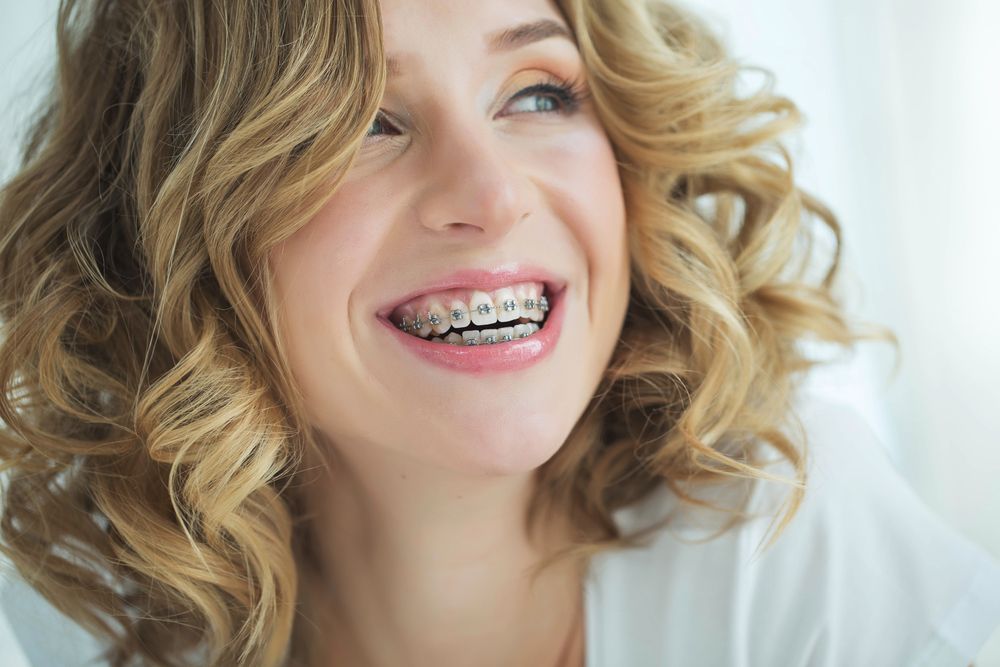Orthodontic treatment is not only beneficial for straightening your teeth, but can also improve your overall oral health. Dental malocclusion, or crooked teeth, is caused by problems with the shape and size of your jaw or teeth. Left untreated, crooked teeth can lead to serious oral health complications. Keep reading to learn more about the symptoms of malocclusion, benefits of orthodontics for your oral health, and available orthodontic treatments.
Symptoms of Malocclusion
While malocclusion is a cosmetic problem, it can also take a toll on your oral health. Depending on the severity of your dental malocclusion, the following symptoms may appear:
- Improper Alignment of Teeth
- Biting of Inner Cheeks or Tongue
- Difficulty Chewing
- Speech Difficulty
- Difficulty Keeping Teeth Clean
- Increased Decay
- Periodontal Disease
How is Malocclusion Diagnosed?
Malocclusion of teeth is typically identified during routine dental exams. To evaluate your teeth and jaw, your dentist may take X-rays. If an orthodontic issue is identified, your dentist will refer you to an orthodontist for a complete evaluation.
Benefits of Orthodontics for Oral Health
The earlier you treat malocclusion, the more favorable the outcome. Orthodontics is a speciality of dentistry that corrects the dental and facial structures to treat malocclusion. Here are three health benefits of orthodontics for oral health:
- Healthier Smile – When teeth are crowded or crooked, bacteria are more likely to flourish in the spaces between your teeth. Teeth that are too close in proximity to each other may also experience decay over time. Proper tooth alignment makes it easier to properly clean your teeth and reduces your risk for gum disease and cavities.
- Improved Bite – Crooked teeth can increase your risk of fracturing your teeth. Over time, daily biting and chewing can weaken your tooth enamel and damage your jaw function. Orthodontic treatment allows your teeth to create a more natural bite.
- Improved Chewing – Orthodontic treatment corrects problems such as overbite, underbite, and narrow arches. Improving teeth alignment allows for better chewing function.
How is Malocclusion Treated?
Malocclusions can be treated with the help of braces. To determine the suitable treatment, your orthodontist may do a visual examination, panoramic x-rays, and bite impressions of your entire mouth. Four common orthodontic treatments for malocclusion include:
- Invisalign – Invisalign is a removable appliance that is made with a series of 18 to 30 clear plastic aligners. These aligners are custom-fitted to your mouth to bring your teeth and jaw into alignment.
- Traditional Metal Braces – Traditional braces are the most commonly used orthodontic appliance to treat malocclusion. Braces apply gentle force to your teeth to change their position over time.
- Ceramic Braces – Ceramic braces are a new variation of traditional metal braces. While they are the same size and shape as metal braces, the color of ceramic braces enables them blend in with your teeth so that they appear to be somewhat invisible.
Final Word
Misaligned teeth can lead to serious oral health issues. By fixing the alignment of your teeth, you are also ensuring the health and longevity of your smile. To learn more about the best orthodontic treatment for your specific dental condition, book an appointment with us today!


 Previous Article
Previous Article

